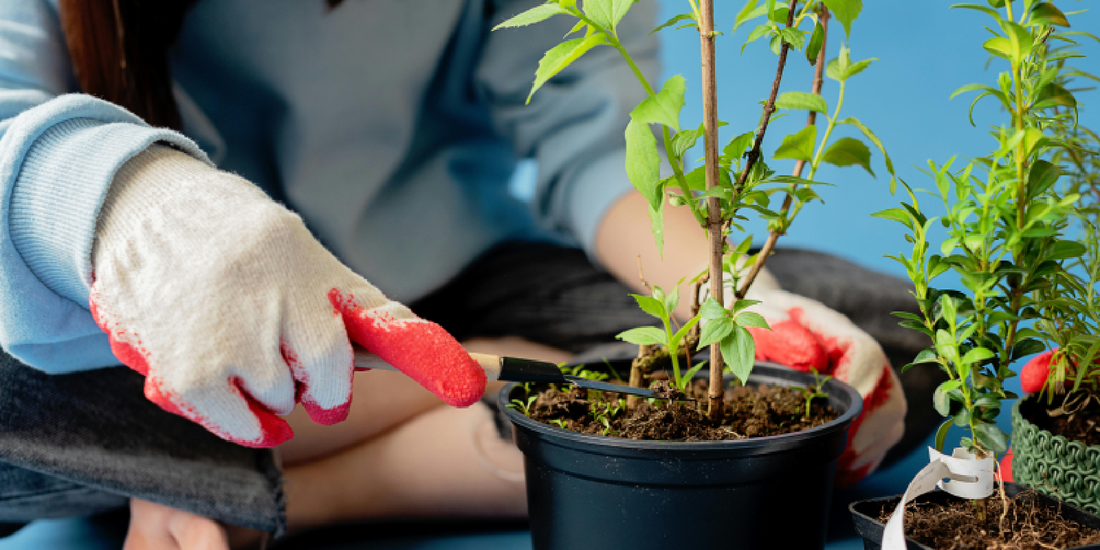
Common Mistakes When Using Grow Lights
Share
Indoor gardening has grown in popularity over the past decade, and with it, grow lights have become an essential tool for plant lovers. Whether you’re nurturing delicate herbs in the kitchen, cultivating exotic orchids, or displaying lush greenery on a stylish stand like the amoyls VerdantGlow S-Shaped 8-Tier Plant Shelf with Grow Lights, the right lighting can make the difference between thriving plants and struggling ones.
However, many plant enthusiasts unknowingly make mistakes when using grow lights. These errors can lead to stunted growth, leaf damage, or even plant death. In this comprehensive guide, we’ll break down the most common mistakes and share practical tips to ensure your plants get the full benefits of artificial lighting.
1. Placing the Lights Too Far or Too Close
One of the most common issues is improper light distance.
- Too Far: If the grow light is placed too far away, plants may stretch toward the light, developing long, weak stems (a condition called etiolation). Leaves may also turn pale due to insufficient light.
- Too Close: On the other hand, placing lights too close can cause heat stress, scorch leaves, and dry out soil too quickly.
Optimal Setup:
Most LED grow lights perform best when positioned 6–18 inches from the plant canopy, depending on light intensity. The VerdantGlow S-Shaped Plant Shelf is designed with adjustable tiers, making it easy to maintain the correct distance.
2. Using the Wrong Light Spectrum
Plants require different light spectrums for different growth stages:
- Blue Light (400–500 nm): Promotes vegetative growth, strong stems, and leafy foliage.
- Red Light (600–700 nm): Encourages flowering and fruiting.
- Full Spectrum: Best for overall plant health and consistent growth.
The Mistake: Using household bulbs or decorative LEDs that don’t emit the right wavelengths. While these may look bright to the human eye, they often lack the spectrum plants need.
The Fix: Choose full-spectrum grow lights like those integrated into the amoyls VerdantGlow, which are engineered to mimic natural sunlight for year-round growth.
3. Ignoring the Importance of Light Duration
Even the best grow light won’t work if the lighting schedule is wrong.
- Too Much Light: Plants, like people, need rest. Overexposure can cause stress, leaf burn, and reduced growth rates.
- Too Little Light: Without enough daily exposure, plants will struggle to photosynthesize effectively.
Ideal Lighting Hours:
- Seedlings: 14–16 hours per day
- Vegetative Plants: 12–14 hours per day
- Flowering Plants: 10–12 hours per day
Pro Tip: Use a timer to automate your lighting schedule. The VerdantGlow shelf pairs well with plug-in timers to ensure consistency without daily manual adjustment.
4. Overlooking Plant Type and Light Needs
Not all plants have the same lighting requirements:
- Low-Light Plants: Ferns, pothos, and snake plants thrive with indirect or moderate light.
- Medium-Light Plants: Herbs, begonias, and African violets prefer brighter conditions.
- High-Light Plants: Succulents, cacti, and tomatoes require intense, direct light.
The Mistake: Treating all plants the same and providing identical lighting conditions.
The Fix: Group plants by light requirement on different tiers of your VerdantGlow shelf to optimize light exposure for each species.
5. Forgetting About Heat Output
While LEDs produce less heat than traditional bulbs, they can still warm the surrounding air.
- Too Much Heat: Can dry soil quickly, stress roots, and scorch leaves.
- Too Little Warmth: Some tropical plants may not thrive in cool conditions, even with proper lighting.
Solution: Monitor temperature near your plants with a thermometer. If heat becomes excessive, improve ventilation or adjust light placement.
6. Neglecting Watering Adjustments
Lighting impacts evaporation rates.
- Underwatering: With strong grow lights, plants may need more frequent watering as soil dries faster.
- Overwatering: If lights are weaker or further away, evaporation slows, and excess moisture can lead to root rot.
Tip: Adjust your watering routine according to light intensity and plant type. Always check soil moisture before watering.
7. Ignoring Reflection and Light Loss
Grow lights work best when their output is maximized. Without reflective surfaces, much of the light is lost.
- The Mistake: Positioning plants in a dark corner where light escapes instead of being redirected to the plant.
The Fix: Use reflective back panels or position your VerdantGlow shelf near a light-colored wall to bounce light back onto leaves.
8. Skipping Regular Light Maintenance
Dust and dirt can accumulate on light fixtures, reducing efficiency.
- Impact: Even a thin layer of dust can lower light intensity by 10–20%, affecting plant growth.
Maintenance Routine:
- Wipe down LED covers every 2–4 weeks.
- Check for loose connections or flickering bulbs.
9. Not Adjusting Light Height as Plants Grow
As plants mature, their height changes, altering the distance between the canopy and the grow light.
- The Mistake: Leaving lights fixed while plants grow closer, risking leaf burn.
- The Fix: With the S-Shaped 8-Tier Shelf, adjust plant placement or light positioning regularly.
10. Using Grow Lights Without Monitoring Plant Response
Your plants will “tell” you how they feel about their lighting:
- Signs of Too Much Light: Leaf curling, brown tips, crispy edges.
- Signs of Too Little Light: Leggy stems, small leaves, pale color.
Best Practice: Observe weekly and adjust lighting distance, duration, or intensity as needed.
Bonus Tips for Maximizing the VerdantGlow S-Shaped Plant Shelf
- Rotate Plants Weekly – Ensures even growth and exposure.
- Pair Lights with Proper Nutrition – Light alone isn’t enough; use balanced fertilizer.
- Incorporate Seasonal Adjustments – Shorten light hours in winter for some species to mimic natural cycles.
- Create Zones – Dedicate top tiers for high-light plants and lower tiers for low-light species.
Conclusion
Grow lights are a powerful tool for indoor gardening, but only if used correctly. Avoiding these common mistakes can dramatically improve your plant health, boost growth rates, and enhance your indoor space’s beauty.
The amoyls VerdantGlow S-Shaped 8-Tier Plant Shelf with Grow Lights offers a stylish, space-saving solution for displaying and nurturing your plants with optimal lighting. By pairing the right equipment with the right techniques, you can create a thriving indoor garden that flourishes year-round.
